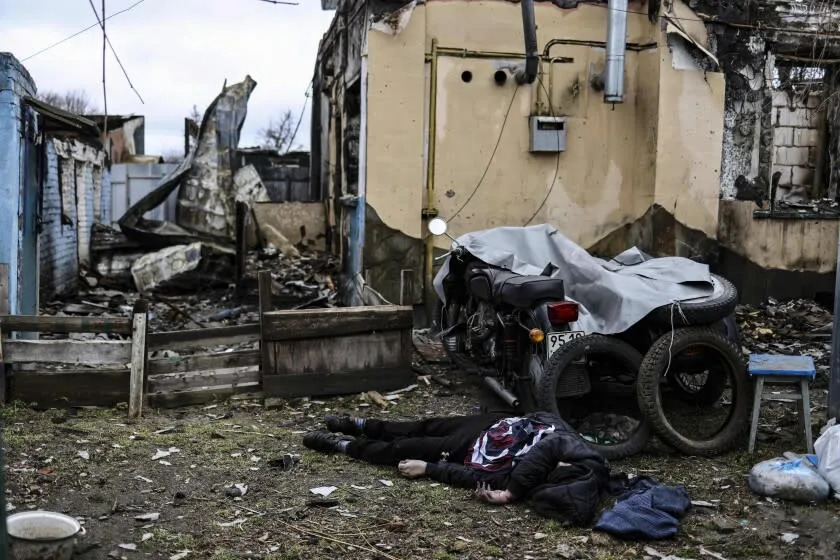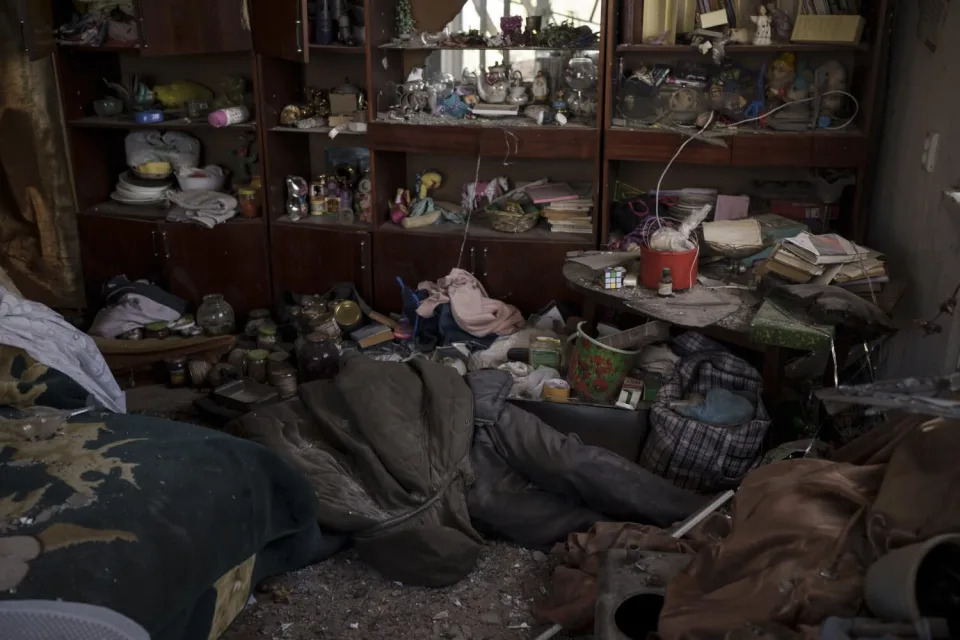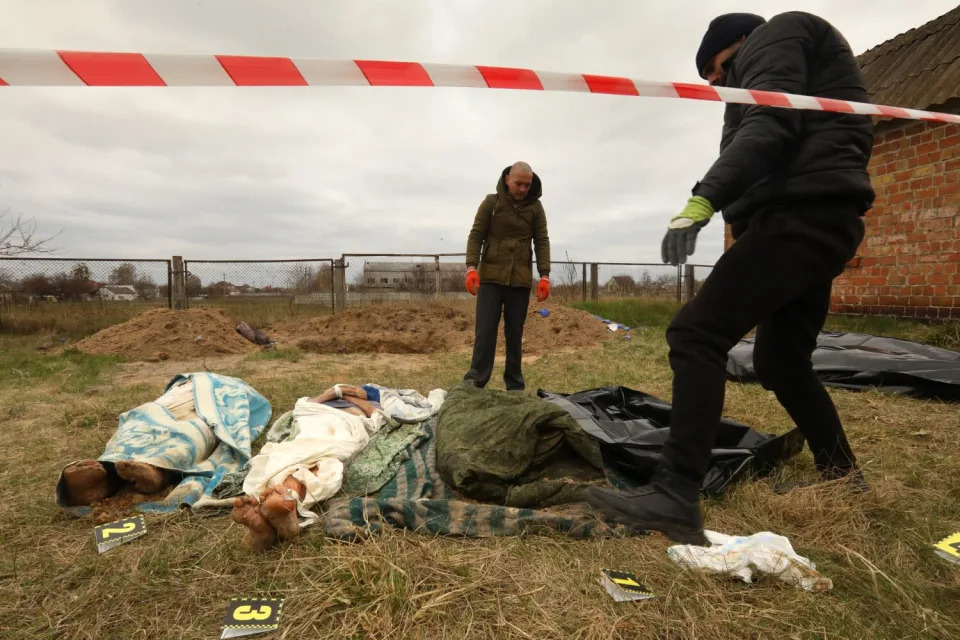Los Angeles Times
Grave by grave, police and war crimes investigators comb a Ukrainian forest

The Russian troops left weeks ago. But the little forest that lies between this Ukrainian village and a neighboring hamlet keeps yielding bodies, one by one.
The latest was a man with holes in his socks.
On a spring day of fitfully alternating clouds and sunshine, tattered red-and-white police tape marked off the shallow depression into which the body had been dumped and covered with a thin layer of dirt.
A villager stumbled onto it late Tuesday, and by the next morning, after de-miners had swept the area for explosives, black-clad police in white gloves were crouched at the graveside, brushing aside clumps of soil.
In this patch of woods, less than a 40-minute drive from the capital, Kyiv, five bodies have been unearthed in recent weeks, scattered amid what were once Russian fortifications. All were shot. Some bore obvious signs of torture.
For a tiny farming community such as this one, each such discovery is a fresh wound — but at the same time a potential source of relief.
A weathered-looking woman named Alyona, whose brother went missing March 4, was summoned by police to this grove of trees a few dozen feet from the side of a narrow road. They inquired, gently, if this body might be his.
It was not.
“I have to go and do this quite often,” she said quietly. “Every time they find another one.”
When the Russians first arrived, Alyona recounted, her brother and a friend got in the car, intending to go and talk to them about how villagers would be treated. At the time it didn’t seem like a foolhardy thing to do.
She hasn’t seen her brother since.
Before hurrying away without giving her last name, she explained his thinking: “He was under the impression that in the 21st century, these soldiers wouldn’t touch civilians.”
Very quickly, villagers learned otherwise.
Their district, Bucha, with a main city by the same name, is now a bleak watchword for suspected atrocities against civilians in Russian-occupied areas: torture, rape, execution-style killings.
Much of the evidence was unearthed — literally — weeks after the fact, as bodies were discovered in cellars and shallow graves once the occupiers had departed. Other corpses were left in the open, scattered willy-nilly in streets and gardens.
International forensic specialists have joined local police in investigating more than 9,000 potential war crimes, Ukraine’s prosecutor-general, Iryna Venediktova, said this week. Since early April, when the Russians abandoned their threatened attack on Kyiv, at least 1,200 civilian deaths have been confirmed in the capital region from the occupation.
Like ripples radiating from a stone tossed in a pond, the killings were concentrated in the more densely populated areas, but also occurred in outlying hamlets such as Vysehrad, little more than a cluster of simple wood or brick structures and farm fields.

Police knew nothing yet of the man whose remains they were unearthing on Wednesday, save that he was thought to be a “local citizen,” said Oleksandr Omelyanenko, the Bucha district police chief.
A few feet away, the newly uncovered corpse lay on its back. The arms were outstretched in a V-shape, a ruched-up black sweater covering the head and part of the torso. Dark trousers bore red racing stripes on the sides. The feet were shoeless, with socks in need of darning.
One black-clad officer crouched near the head of the grave, delicately prising a green-tinted hand free from the dirt, while a colleague stood by, holding a clipboard, making careful notes.
This day was only the beginning of what would be a lengthy and involved forensic process, during which a cause of death would be formally determined. Authorities were hoping that friends or relatives of missing people, who regularly check the district’s morgue, would be able to provide identification.
In this scatter of towns and villages less than an hour’s drive from the capital, cleanup and reconstruction are already proceeding briskly. Well-marked detours route traffic around smashed bridges. Rubble is neatly swept into piles.
In Makariv, the township that encompasses Vysehrad, police set up shop in an outbuilding attached to a small market, after their headquarters across the street were blackened and hollowed by a missile strike.

The damage to communities, though, is not only physical. In the Bucha area, police are investigating about a dozen cases of suspected collaboration, responding to reports that some locals provided aid and assistance to those same Russians who were harming and killing their neighbors.
Meanwhile, the task of exhumation, at once brutal and banal, will probably continue for weeks, months, even years. Omelyanenko said his officers’ daily work would help determine how these civilians died, but do little to answer the more enduring question of why.
“That I don’t know,” he said, glancing toward that day’s forest grave. “How can I answer this?”
